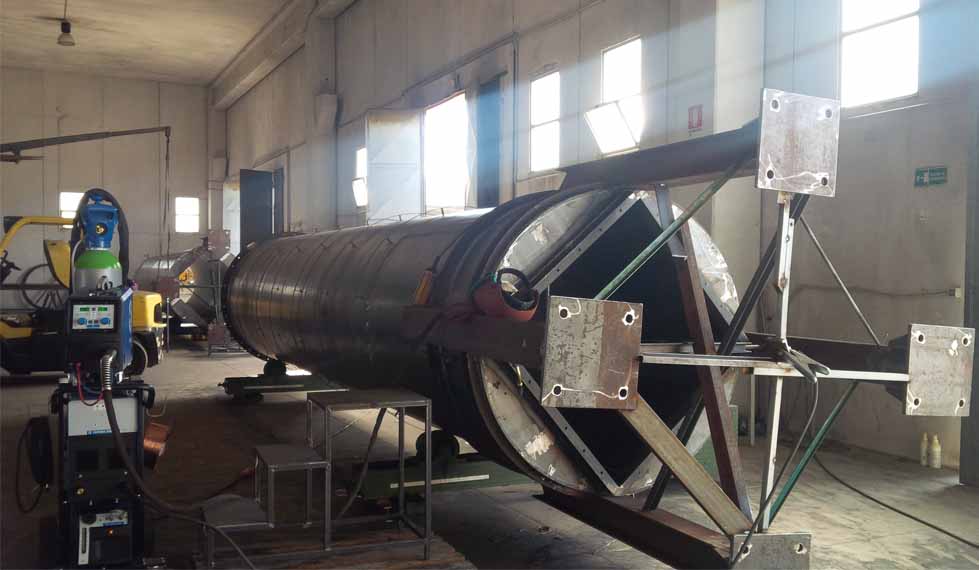Flares
The flare is a last line of defense in the safe emergency release system in a refinery or chemical plant. It uses to dispose of purged and wasted products from refineries, unrecoverable gases emerging with oil from oil wells, vented gases from blast furnaces, unused gases from coke ovens, and gaseous water from chemical industries. Flares are also used for burning waste gases from sewage digesters process, coal gasification, rocket engine testing, nuclear power plants with sodium, water heat exchangers, heavy water plants, and ammonia fertilizer plants. The flare provides a means of safe disposal of the vapor streams from its facilities, by burning them under controlled conditions such that adjacent equipment or personnel are not exposed to hazards, and at the same time obeying the environmental regulation of pollution control and public relations requirements. The chemical process used for flaring is a high temperature oxidation reaction to burn combustible components, mostly hydrocarbons, or waste gases from industrial operations. In combustion, the gaseous hydrocarbon (natural gas, propane, ethylene, propylene, butadiene, butane and etc) reacts with atmospheric oxygen to form carbon dioxide (CO2) and water. Several by products formed will be carbon monoxide, hydrogen and others dependent upon what is being burned. Efficiency of hydrocarbon conversion is generally over 98%.
Flare Type: Flares are generally categorized in two ways:
- by the height of the flare tip (i.e., ground or elevated), and
- by the method of enhancing mixing at the flare tip (i.e., steam-assisted, airassisted, pressure-assisted, or non-assisted).
Selection of ground or elevated flare type is influenced by several factors, such as availability of space; the characteristics of the flare gas (composition, quantity and pressure); economics; investment and operating costs; public relations and regulation.
I) Elevated Flare Elevated Flare System
Elevated flare is the most commonly used type in refineries and chemical plants. Has larger capacities than ground flares. The waste gas stream is fed through a stack from 10 meters to over 180 meters tall and is combusted at the tip of the stack. The elevated flare, can be steam assisted, air assisted or non-assisted. Elevated flare can utilize steam injection / air injection to made smokeless burning and with low luminosity up to about 20% of maximum flaring load. The disadvantage of steam injection / air injection is it introduces a source of noise and cause noise pollution. If adequately elevated, this type of flare has the best dispersion characteristics for malodorous and toxic combustion products. Capital costs are relatively high, and an appreciable plant area (steril area) may be rendered unavailable for plant equipment, because of radiant heat considerations. For safety reasons a stack is used to elevate the flare. The flare must be located so that it does not present a hazard to surrounding personnel and facilities. Elevated flares can be selfsupported (free-standing), guyed, or structurally supported by a derrick o derrick guy-wired.
- Self supported
- Guy Wired
- Derrick supported
- Demountable Flare
- Derrick Guy Wired
II) Ground Flare
A Ground Flare is where the combustion takes place at ground level. It varies in complexity, and may consist either of conventional flare burners discharging horizontally with no enclosure or of multiple burners in refractory-lined steel enclosures. The type, which has been used almost exclusively, is the multijet flare enclosed type. Ground flare are usually equipped with windfences structure. An enclosed flare’s burner heads are inside a shell that is internally insulated. This shell reduces noise, luminosity, and heat radiation and provides wind protection. A high nozzle pressure drop is usually adequate to provide the mixing necessary for smokeless operation and air or steam assist is not required. In this context, enclosed flares can be considered a special class of pressureassisted or non-assisted flares. The height must be adequate for creating enough draft to supply sufficient air for smokeless combustion and for dispersion of the thermal plume. These flares are always at ground level. Enclosed flares generally have less capacity than open flares and are used to combust continuous, constant flow vent streams, although reliable and efficient operation can be attained over a wide range of design capacity. Enclosed flares are typically found at landfills.

